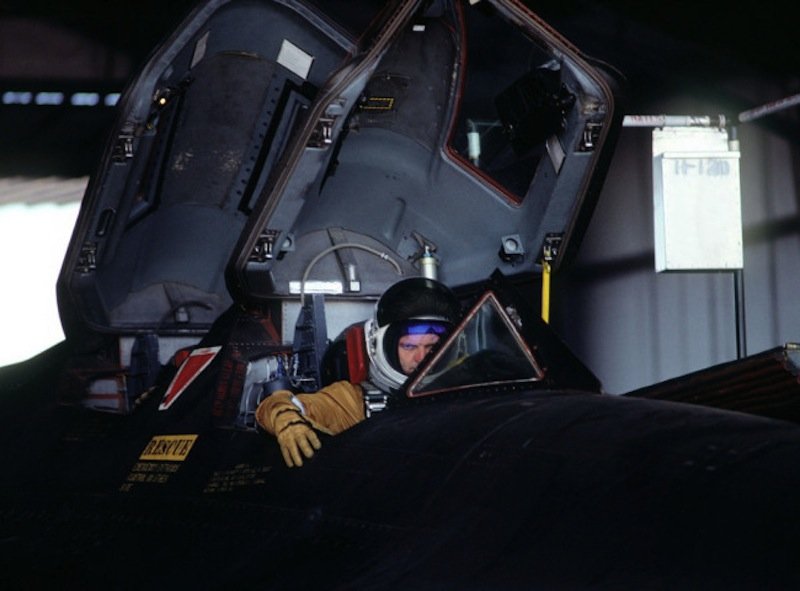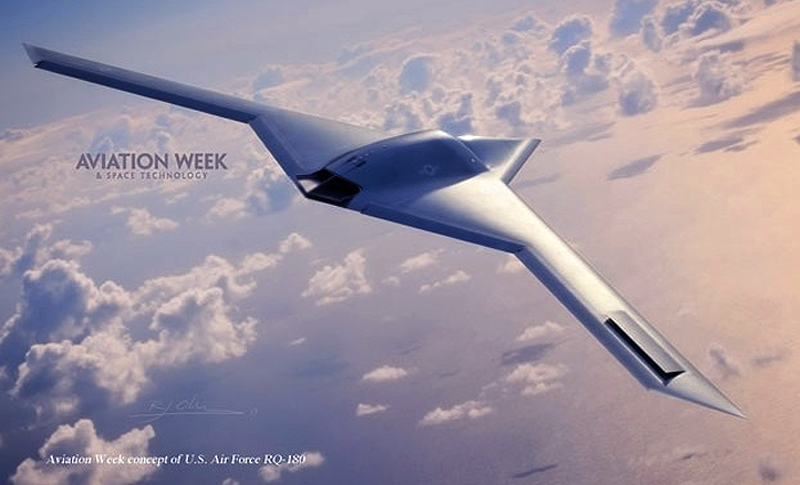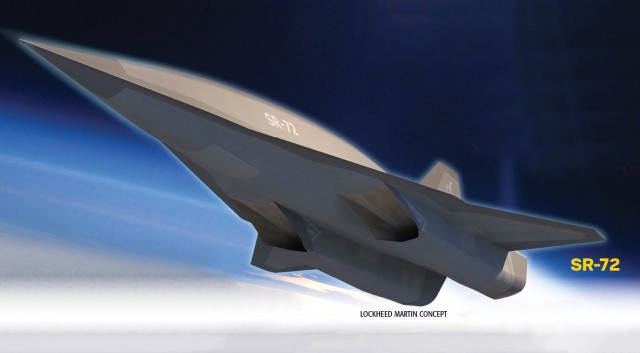Only 86 pilots flew the SR-71.
BZ

Only 86 pilots flew the SR-71.
BZ
Click on this story. You won’t regret it.
“We bad.”
Now that was some funny shite.
BZ
 Was there, could there, ever be a replacement for the Lockheed Skunk Works SR-71?
Was there, could there, ever be a replacement for the Lockheed Skunk Works SR-71?
Temporarily, there is. Lockheed’s SR-91 Aurora. Or is there?
Probably one of the most incredible examples of the analog age, the technology behind the Lockheed SR-71 begs a post which I am, actually, in the process of writing. The entire SR-71 program, massively expensive, was taken down — in retrospect — way too early in consideration of the inefficiencies of satellites.
 I would refer you, as I display here, to a LeWeb 2012 talk given by a “sled driver” named Brian Shul who lives in Chico, California, not far from Beale AFB where he was assigned as an SR-71 pilot.
I would refer you, as I display here, to a LeWeb 2012 talk given by a “sled driver” named Brian Shul who lives in Chico, California, not far from Beale AFB where he was assigned as an SR-71 pilot.
An amazing individual with an amazing life, Shul was one of literally a handful of persons privileged and trained to fly the SR-71. After watching the video below about the SR-71 you’ll come to understand what an astounding accomplishment it was to even build the craft, much less make it as efficient and successful as it was.
The SR-71 became an analog aircraft in a digital world that succeeded beyond anyone’s and everyone’s expectations.
Finally, is the SR-91 Aurora a myth?
In 2006, renowned aviation writer Bill Sweetman had stated and derived to a conclusion that, “This evidence of 20 years of examining budget “holes”, unexplained sonic booms, plus the Gibson sighting , helps establish the program’s initial existence. My investigations continue to turn up evidence that suggests current activity. For example, having spent years sifting through military budgets, tracking untraceable dollars and code names, I learned how to sort out where money was going. This year, when I looked at the Air Force operations budget in detail, I found a $9-billion black hole that seems a perfect fit for a project like Aurora.”
You must decide for yourself.
BZ
 From ForeignPolicy.com:
From ForeignPolicy.com:
by Zach Rosenberg
The drone that spied on bin Laden and on Iran’s nukes was just the start. Meet its bigger, higher-flying, stealthier cousin, the Northrop Grumman RQ-180. It’s probably been flying for a few years now, but you weren’t supposed to know that; the existence of this secret project, based out of Area 51, was revealed Friday by Aviation Week.
The RQ-180 is likely flying from the secret Air Force test facility at Groom Lake, Nevada, widely known as Area 51. Its exact specifications, including such crucial details as the number of engines, is unknown, but Aviation Week suggests a wingspan of over 130 feet, based on hangar construction at Northrop’s Palmdale, California facility. The number of aircraft built is also unknown; however, a flight test program, relatively quick entry into service and open budget documents suggest a small fleet are flying routinely.
The aircraft’s performance is said to be similar to Northrop’s white-world entry, the RQ-4 Global Hawk, which can fly for days and cover thousands of miles. Hopefully the RQ-180 performs better; Global Hawk has received mixed marks on its evaluations, and the aircraft it was meant to replace, the venerable Lockheed U-2, will continue to fly for decades to come.
I wrote this past Sunday about the emergence of the Skunk Works-designed Lockheed-Martin SR72.
Conclusion?
Groom Lake, Area 51 and Wonderland are up and not just running, but sprinting.
Good news.
BZ
P.S.
The source Aviation Week & Space Technology article is here. And with a wingspan of a possible 130 feet? Payloads and weapons could consist of — anything.
From the minds of Clarence “Kelly” Johnson and Ben Rich came the original Skunk Works, a Lockheed conceptual project initiated in 1943.
 “Many times a customer would come to the Skunk Works with a request and on a handshake the project would begin, no contracts in place, no official submittal process.”
“Many times a customer would come to the Skunk Works with a request and on a handshake the project would begin, no contracts in place, no official submittal process.”
The Skunk Works — still alive and thriving today — resulted in ground-breaking aircraft, such as:
This is an impressive list of airframes from the minds of people unconstrained in their thoughts and willing to push the technological envelope of the times, from every angle.
I proffer that the SR-71 was the most enthralling and technologically advanced aircraft of the entire 20th century and into the 21st. It was an airframe designed, literally, by white male geeks in short-sleeved dry-cleaned white shirts and thin dark ties, wearing brown plastic framed thick glasses, pocket protectors and utilizing wooden slide rules. Computers simply did not exist en masse. They sat at cheap pine tables and produced pages and pages of blue drafts, with hand-lettered notes and ennui enabled by T-squares.
The SR-71 served with the USAF from 1964 to 1998, and a total of 32 aircraft were built. 12 were lost in accidents, but none were lost to enemy action.[3][4]
The SR-71 is an aircraft, completely analog, that was allowed to perish due to age and expense. It was, arguably, the costliest aircraft to have ever existed in the USAF inventory.
Since its demise there has been much speculation as to its replacement. Was it Aurora? And what would an Aurora aircraft look like? Would it even be manned, considering the ubiquitous nature of drones today?
And, further, why would you not want a replacement? There exist times of crisis when moving geosynchronous satellites simply won’t do, for two very important reasons: 1) it is too slow, and 2) you can only move a satellite ____ times before you deplete its finite fuel capacity. America had the capability to hustle an SR-71 from Kadena or Beale and be over a trouble spot in as little as an hour or two.
With all that in mind, however, it appears the successor to the incredible SR-71 has been “outed,” if you will, by an article from ExtremeTech.com.
It has been designated the SR-72.
by Sebastian Anthony
Lockheed Martin’s Skunk Works has confirmed that it is developing the SR-72 spy plane. The successor to the SR-71 Blackbird, which was capable of Mach 3.5, the SR-72 will be a hypersonic unmanned aircraft capable of Mach 6, or just over 4,500 mph. At hypersonic speeds, the SR-72 will be able to traverse any continent in around an hour — meaning, if they’re strategically positioned around the world on aircraft carriers, the US military can strike or surveil any location on Earth in about an hour. It is also suspected that the SR-72′s hypersonic engine tech — some kind of hybrid scramjet — will find its way into the US military’s High Speed Strike Weapon (HSSW), a missile that can theoretically strike anywhere on Earth in just a few minutes.
 The SR-72, despite the similar name, is a completely new plane. At the moment, the SR-72 is still only a concept, though Lockheed has now confirmed that the plane is in active development. An optionally piloted scale version of the plane with a single engine will be built in 2018, with test flights scheduled for 2023. If all goes to plan (funding hasn’t yet been secured by Lockheed Martin), a full-size SR-72 (about 100 feet long) will be built and tested by 2030. As it stands, the current plan is for the SR-72 to be unmanned. It will be a very, very large drone. It will probably be unarmed, too, and outfitted entirely for intelligence gathering, though it’s too early to say for sure.
The SR-72, despite the similar name, is a completely new plane. At the moment, the SR-72 is still only a concept, though Lockheed has now confirmed that the plane is in active development. An optionally piloted scale version of the plane with a single engine will be built in 2018, with test flights scheduled for 2023. If all goes to plan (funding hasn’t yet been secured by Lockheed Martin), a full-size SR-72 (about 100 feet long) will be built and tested by 2030. As it stands, the current plan is for the SR-72 to be unmanned. It will be a very, very large drone. It will probably be unarmed, too, and outfitted entirely for intelligence gathering, though it’s too early to say for sure.
While the SR-72 will undoubtedly be a paragon of stealth and fashioned from monolithic crystals of titanium wrapped in carbon fiber, its defining feature is its operational speed of Mach 6 — or 4,567 mph (7,350 kph). At this speed, the SR-72 can cross the Atlantic (or Europe or China or…) in about an hour — or circumnavigate the planet in six hours. At an operational altitude of around 80,000 feet (24,300 meters) and Mach 6, the SR-72 will be almost impossible to shoot down.
Groom Lake and Area 51: Wonderland all over again.
BZ